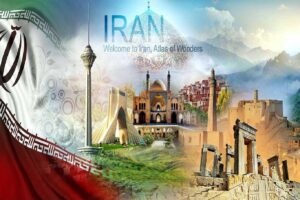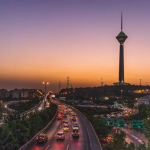The Zagros Mountains are a majestic mountain range located in western Iran, stretching from the border with Turkey in the northwest to the Persian Gulf in the south. With an estimated length of 1,800 km and a width of 250 km, the Zagros range boasts a diverse landscape of towering peaks, deep valleys, and vast plateaus.
The Geology of the Zagros Mountains
The Zagros Mountains are a very old mountain range, having formed during the Paleozoic era, which began around 541 million years ago and ended around 252 million years ago. The range was subsequently uplifted and shaped during various tectonic events throughout its history, including the collision between the Arabian Plate and the Eurasian Plate that occurred during the late Cretaceous period, approximately 70 million years ago.

Biodiversity in the Zagros Mountains
The Zagros Mountains are home to a rich diversity of plant and animal species, many of which are endemic to the region. The mountains are covered in a mix of deciduous and coniferous forests, as well as shrublands and grasslands. Some of the plant species found in the Zagros Mountains include oak, pistachio, almond, and wild olive.
The mountains are also home to a number of animal species, including the Persian leopard, the Bezoar ibex, the Asiatic black bear, and the Persian squirrel. The region is also an important flyway for migratory birds, with over 200 bird species recorded in the area.
also read : Explore The Alborz Mountains
Peaks of Zagros Mountains
The Zagros Mountains are home to several notable peaks that offer stunning views and challenging climbs for outdoor enthusiasts. Here are a few of the most famous peaks:
Dena
The Dena Mountains range is located in the southwestern Zagros Mountains and is home to the highest peak in the range, reaching an elevation of 4,409 meters. It is a popular destination for hikers and skiers, offering stunning views of the surrounding landscape.
Zard-Kuh
Located in the central Zagros range, Zard-Kuh is one of the most notable peaks in the Zagros Mountains, reaching an elevation of 4,221 meters. It is a popular destination for hikers and climbers, offering breathtaking views of the surrounding landscape.
Oshtoran Kooh
This group of three peaks is located in the central Zagros range and is known as “The Three Peaks.” The highest peak reaches an elevation of 4,050 meters and is a popular destination for climbers.
The Cultural Heritage of the Zagros Mountains
The Zagros Mountains have been inhabited by humans for thousands of years, and the region has a rich cultural history. The ancient Elamite civilization, which existed in the area between 2700 BCE and 539 BCE, left behind a number of impressive archaeological sites, including the ruins of the city of Susa, which was once the capital of the Elamite kingdom.
In more recent times, the Zagros Mountains have been home to a number of nomadic tribes, including the Qashqai and Bakhtiari people, who have lived in the region for centuries and are known for their traditional lifestyle and colorful clothing.
also read : all things you need to know about the Sabalan Mountain
Tourism
The Zagros Mountains are a popular tourist destination, attracting visitors from around the world who come to experience its natural beauty and rich cultural heritage. In addition to hiking and climbing, visitors can enjoy a range of other outdoor activities, such as rock climbing, mountain biking, and skiing. There are also a number of cultural attractions in the region, including the ancient city of Susa and the Qashqai and Bakhtiari nomadic camps.
Take part in our guided tours to the Zagros Mountains, providing you a nice visit with a deeper understanding of the mountain’s history, formation, flora, and fauna.
You can choose Iran Tour Packages that offer camping in remote valleys, alpine lakes, and scenic villages deep in the Zagros range.
Conclusion
The Zagros Mountains are a natural wonder of Iran, with a rich geological, biological, and cultural history. The range’s towering peaks, stunning landscapes, and unique biodiversity make it a must-visit destination for outdoor enthusiasts and nature lovers. Whether you’re interested in hiking, birdwatching, or learning about the region’s ancient history and cultural traditions, the Zagros Mountains have something for everyone.
Let us know your ideas and comments about this mountain in the comment box below, we will be happy to hear from you!


















